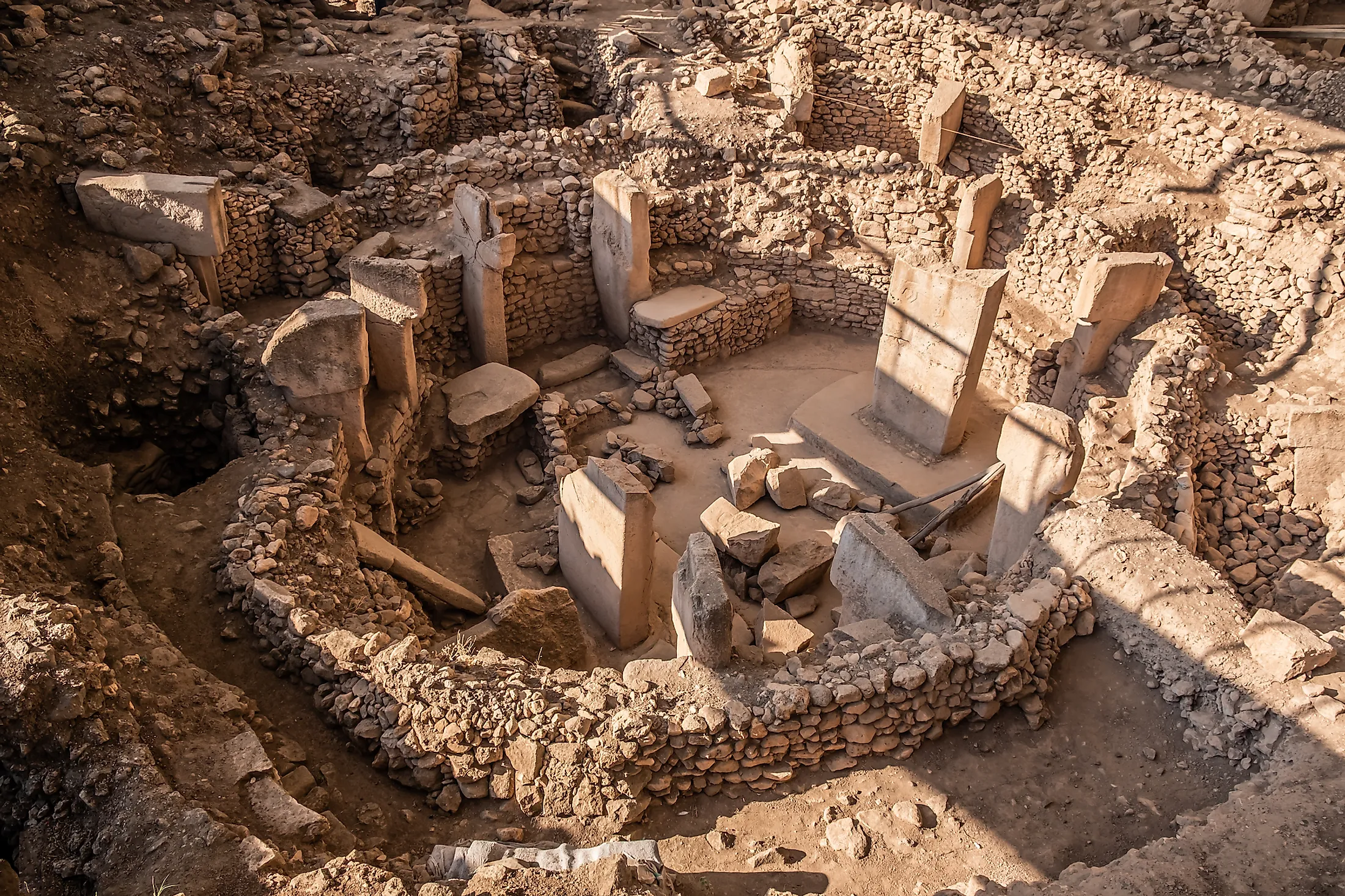
Human Civilization’s First Cities
The cities of our ancient ancestors were both much different yet surprisingly similar to the cities of the modern age. Most early human settlements would have been based around farms and other reliable food sources that did not have to be hunted or followed. As these cities started to develop further, early city planning and organization became more important than ever. For the first time in history, humans were no longer just living amongst a tribe of a few hundred people, many of whom would have been direct family members, but now living in large settlements that were home to thousands of different people. Despite the best efforts of historians and archeologists, there is still much to be uncovered about humanity's earliest cities. Little remains of these once great settlements aside from the odd ruin or dig site.
Origins Of Urbanization
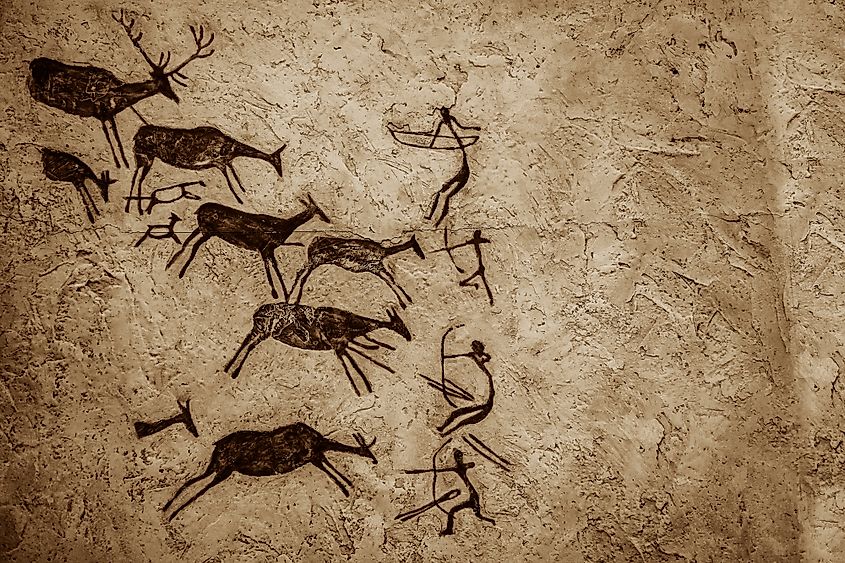
Modern humans have been on the Earth for nearly 200,000 years. For much of our existence, human beings were nomads who did not stay or settle in one place but rather roamed the wilderness, chasing herd animals for sustenance. This all changed sometime around 7500 BC when humans discovered farming and agriculture. Crops such as wheat and rice were a much more reliable and easy-to-manage food source than a herd of deer or buffalo. Instead of constantly chasing a meal, farmers could not only ensure that they were fed but also the people around them. As farming techniques improved, harvest yields increased, and excess food could then be stored or even sold.
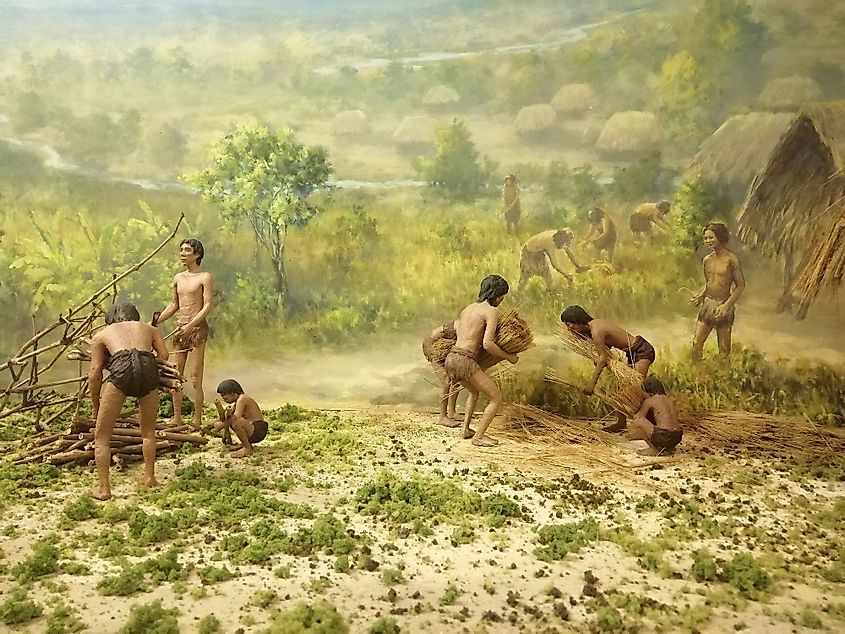
Gathering food in a nomadic setting was something that needed the full attention and effort of each person available. It was one thing to track a herd of animals, but it was another to actually kill, transport, butcher, and use the entirety of the animal. Farming was much less labor intensive. A significant amount of a city's population would have been working in agriculture, but it left a large enough segment of people the opportunity to work on other crafts and skills. The agricultural revolution did not only birth farms and cities but also things like carpenters, stone masons, poets, musicians, shipbuilders, blacksmiths, and many other integral jobs needed for large urban areas to function.
Earliest Known Cities
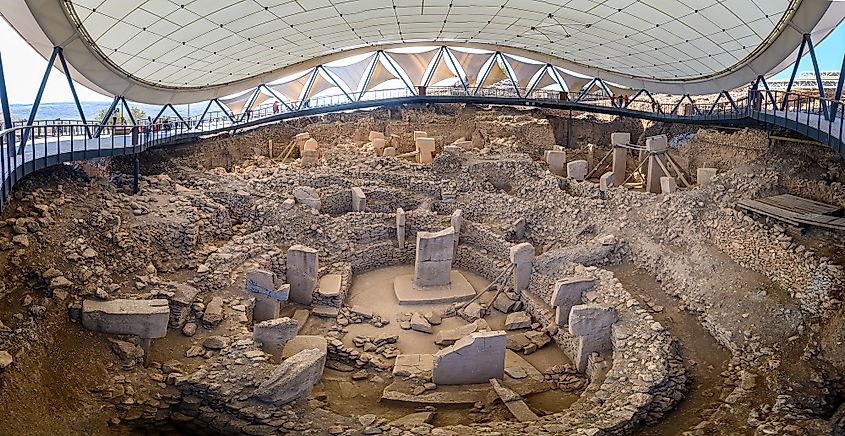
There is much debate among scholars about what is actually the oldest known "city." Some claim that the site known as Gobekli Tepe in modern-day Turkey is the oldest city ever discovered. But there is still a fierce debate over whether or not Gobekli Tepe can actually be labeled as a permanent settlement.
Built more than 11,000 years ago, as far as researchers can tell, it appears that Gobekli Tepe was primarily used as the base of operations for various religious ceremonies and festivities. It is thought by some experts that once these ceremonies were completed, the people who lived in Gobekli Tepe would then leave for months at a time and then only return to perform these religious rites once again.
Archeologists have been able to uncover evidence that housing and other signs of permanent living, but others argue that this is inconclusive and more work must be done. It is believed that much of Gobekli Tepe is still unground and has yet to be unearthed. Gobekli Tepe is still an active site, so the chance of new discoveries being made is certainly not out of the realm of possibility.
What others consider the oldest city in human history is a place called Çatalhöyük. Also located in Turkey, the city of Çatalhöyük was first founded more than 9,000 years ago. The urban planning and structure of Çatalhöyük was messy, to say the least. The settlement never had any kind of streets and has yet to show signs that it possessed anything that resembled a public building. That being said, it is still largely considered by most experts to be officially the oldest city, even founded by humans.
Notable Early Cities
Jericho
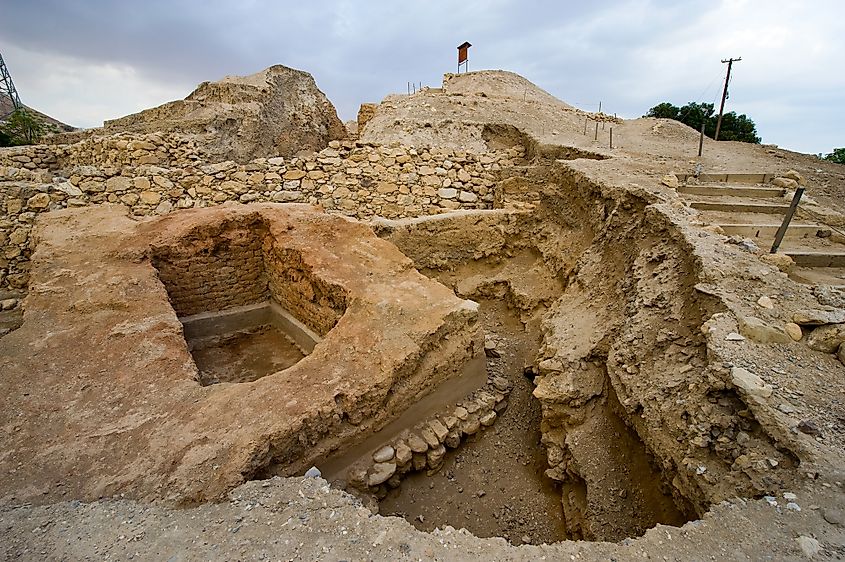
Founded sometime around 9000 BC, Jericho remains one of the oldest continually settled cities on Earth. It is thought that the early years of this settlement began as a base of operations for semi-nomadic hunter and gatherers. As new farming techniques were introduced into the area, Jericho started to take shape in 8000 BC. Across the millennium, dozens of new groups both arrived and left Jericho, with each new arrival bringing something new in terms of culture and technology. Early forms of pottery have been uncovered here that are nearly 6000 years old.
Jericho was famous for its great walls. The presence of walls would suggest that Jericho was often attacked or besieged by neighboring kingdoms and nomads in the area. New archeological findings have discovered that the walls around Jericho were destroyed and rebuilt numerous times. Jericho is perhaps most famous for its appearance in the Bible as the first city that was conquered by the Israelites under the command of Joshua. Jericho was a significant city in Biblical times and would remain notable even under Roman rule. Jericho would become nothing more than a small village as a part of the Ottoman Empire and now sits within the borders of modern-day Israel.
Uruk
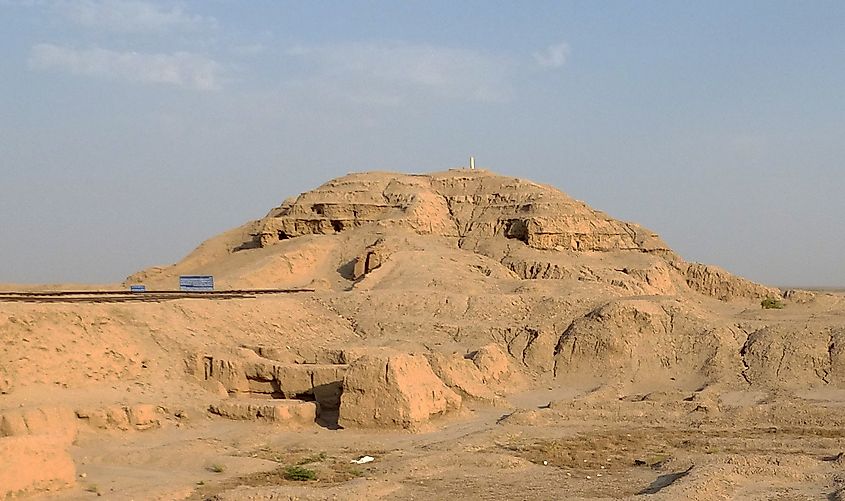
King Enmerkar supposedly founded the ancient city-state of Uruk in 4500 BC in Southern Iraq. The city quickly grew and expanded its reach into nearby lands and was one of the great powers of Mesopotamia. Uruk is often regarded as the first "true" city in the world. Uruk's city planning was centuries ahead of other city-states in the region. It is here that the famous pyramid-like structure called ziggurats was first constructed. The ziggurat was used as both a religious and political building and was the center point of the city, which other districts grew out of.
The success of Uruk largely came from its geographic position, which placed it in the middle of dozens of vital trade routes. As the commercial reach of Uruk expanded, a way of communication was needed to send messages to those in other cities, advertise prices of goods, and conduct business transactions with other people who spoke foreign languages. This is where early writing first originated. The early writing that was developed in Uruk was meant to be simple and easy to understand. This was usually done with the use of crude pictures and symbols to convey a message. Writing was not only beneficial to merchants but to local governments too. Writing allowed them to keep accurate records of grain supplies, codify laws, and communicate with foreign rulers much more reliably.
Uruk would remain the most important city in Mesopotamia for thousands of years until it started to fall into a steady sometime around 2500 BC. Uruk would still have its ups and downs, but it would never fully return to its glorious past. Uruk even played a notable position in the Persian Empire but would eventually be abandoned during the Muslim conquests of the area in 630 AD.
Çatalhöyük
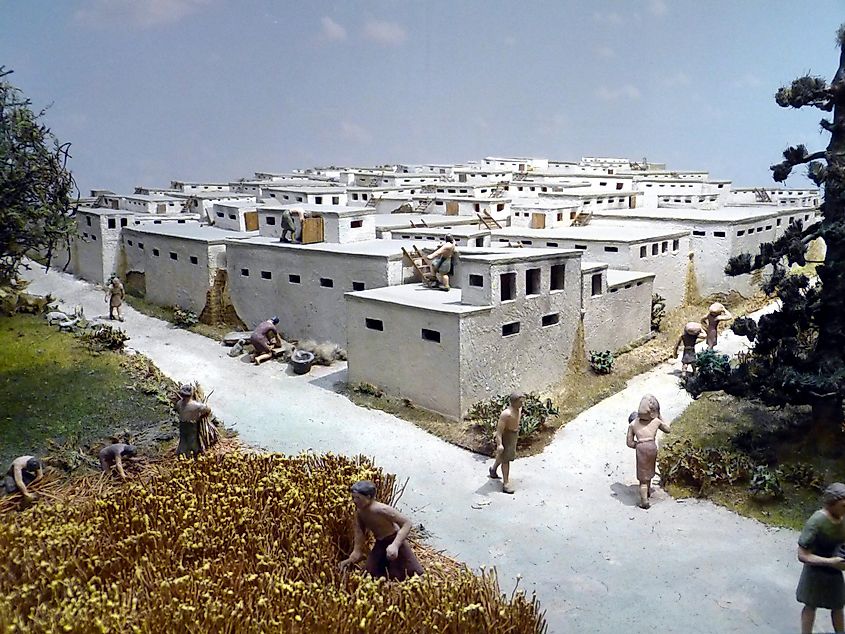
Briefly mentioned earlier, the city of Çatalhöyük is arguably the oldest permanent settlement ever discovered. First founded more than 9,000 years ago in Eastern Turkey. It is likely that Çatalhöyük was first established as a small farming village that eventually grew large enough to become a city. Çatalhöyük has little to no urban planning or clear districts, and many of the homes in the city were connected by rooftops. The homes at Çatalhöyük were incredibly primitive and simple, largely being made out of mud and clay. No matter how simple this early city might have been, it is believed that at its height, it was home to more than 10,000 inhabitants.
Recent discoveries of religious artifacts suggest that Çatalhöyük might have had some kind of "religious district," of sorts, but it is still not clear. It appears that faith did play a large role in the day-to-day life of the people living in Çatalhöyük. Various shines have been uncovered in homes along with the skeletal remains of family members. Experts are under the impression it was common practice to bury dead family members underneath their homes. The skull of dead family members was often removed and kept by relatives as well. The exact purpose or meaning of this grim practice is anyone's guess. There is no evidence of that kind of government structure the citizens of Çatalhöyük would have practiced, but it is likely it would have been similar to that of hunter-gatherers. Some have gone as far as to label the Çatalhöyük political system as an early example of anarcho-communism, but this is largely unsubstantiated.
Memphis
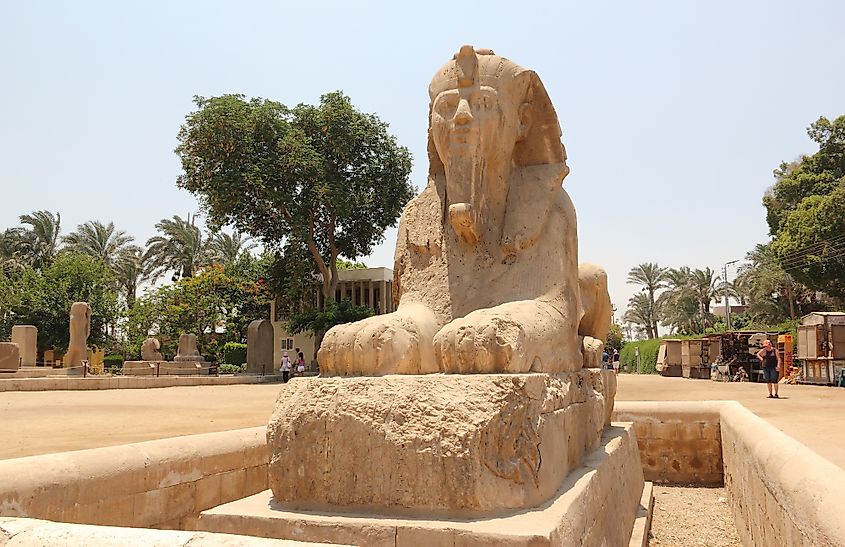
Serving as the capital and center of Egyptian culture and influences for centuries, Memphis was the beating hard of Ancient Egypt for thousands of years. Supposedly founded by the Pharoh Menes in 2925 BC, Memphis was settled as a way to unite the upper and lower kingdoms of Egypt into one. Geographically located in the middle of modern-day Egypt, its position made it ideal for governing such a large nation. The original name of Memphis was White Walls, as it was in reference to the pharaoh's palace at the core of the city. The palace was constructed using thousands of whitewashed bricks, giving it a distinct look in comparison to the other buildings that would have been largely made of sandstone and clay.
Another notable landmark of Memphis was its great temple dedicated to the god Ptah. Ptah was the Egyptian god of craftsmen and artisans and was also interpreted as a god who created humans. Having such a large temple dedicated to Ptah might suggest that Memphis was home to some of the most skilled and respected tradesmen of the age. It would not be surprising, considering how many impressive buildings and landmarks were present in Memphis at its height. Memphis would remain an important city all the way until the end of the Ptolemaic Dynasty in 30 BC. While under the control of a Christian Roman Empire, many of the religious buildings in Memphis fell into disrepair and were neglected by Christians. By the time of the Muslim conquest in the 7th century, Memphis was nothing more than a collection of ruins.
Caral
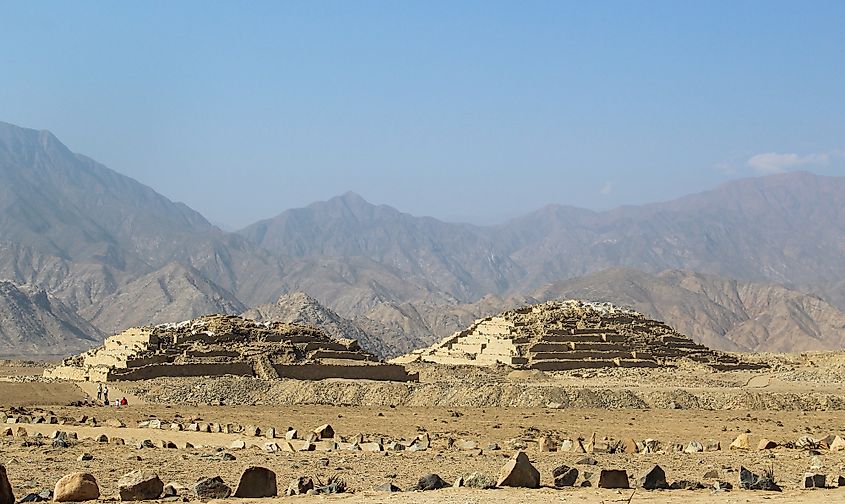
Sometimes called Caral-Supe, this ancient city in Peru is thought to be the first city ever built in the Americas. Constructed around 2,600 BC, the stone pyramids and temples of Caral share a remarkable similarity with that of Ancient Egypt despite being on other sides of the planet from one another. Located in the Supe Valley, the terrain around Caral is mountainous and far inland, making the transportation of building materials incredibly difficult. To this day, experts are not totally certain how Caral was built.
Caral boasts massive public complexes that are home to six enormous pyramids. The largest of the six, the Pirámide Mayor, is over 100 feet tall. Much like other Mesoamerican civilizations that would come after Caral, these pyramids-like structures likely served both a political and religious purpose.
Very little is known about the people and civilization that built Caral. With no written records to speak of, researchers can only go off of what they find in digs. Caral was certainly an impressive and highly advanced city at its height, judging from the massive central plazas that were left behind. It is believed that Caral was eventually abandoned nearby a thousand years after it was founded. For what exact reason the city was abandoned is still a mystery. It was likely a combination of political and environmental factors such as droughts and floods. But the true reason will most likely remain unknown.
Daily Life In An Ancient City
The day-to-day life in an early ancient city would have been almost unrecognizable from our urban lifestyle today. The average person would have most likely worked in the agricultural sector in one way or another. Most farms would have been a short distance outside the city's walls or even within the city itself. People usually worked from sunrise to sunset depending on the time of the year and if the crops were in harvest. Payment would almost never be in the form of precious metals like gold or silver but rather in physical goods like grain or bread.
Ancient societies were incredibly rigid and hierarchical. With little to no social mobility, almost everyone lived and died within the same social class they were born into. The majority of a city's population would have belonged to the "working class" or "common class." These would have consisted of farmers, artisans, merchants, fishermen, and so on.
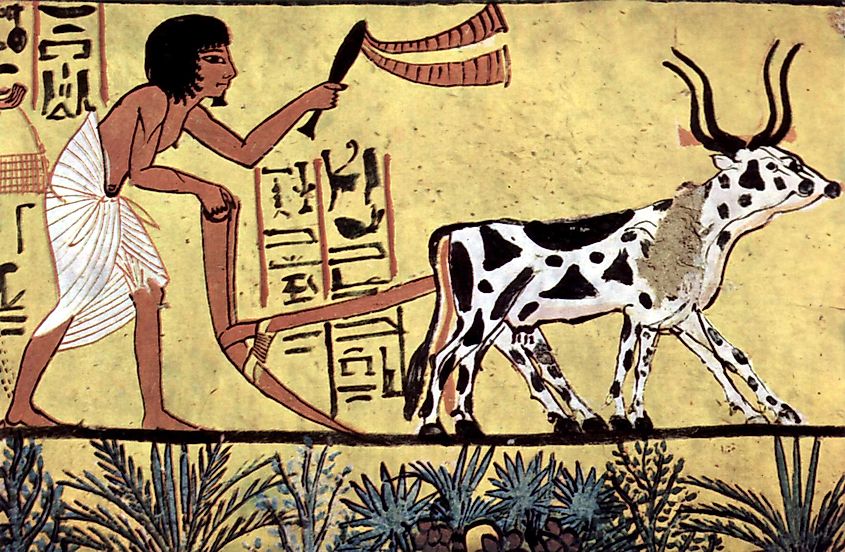
Slavery was common in the ancient world as well. The slave underclass would have been most commonly used as laborers on farms, but the upper classes also used them as servants and aids. An enslaved person would usually be marked by some kind of brand or tattoo somewhere on the body. Depending on the time and place, enslaved people could eventually work or earn their way to freedom, but it is not clear if this happened regularly.
The upper class typically consisted of the land-owning nobility and religious leaders. Sometimes, the king or ruler of a city was both the figurehead of the religion as well as the head of state. A king or ruler of the city would often have total authority and final say in every matter. That being said, each of these rulers would have advisors and other members of the nobility to help guide their decision-making process.
Faith played a large role in ancient life. People would pray to various gods for good harvests, love, peace, war, and just about anything else you could imagine. Numerous festivals would be hosted each year, honoring the gods in their own unique ways. There would have likely been one of the few days in the year when the average person did not work.
Decline And Legacy
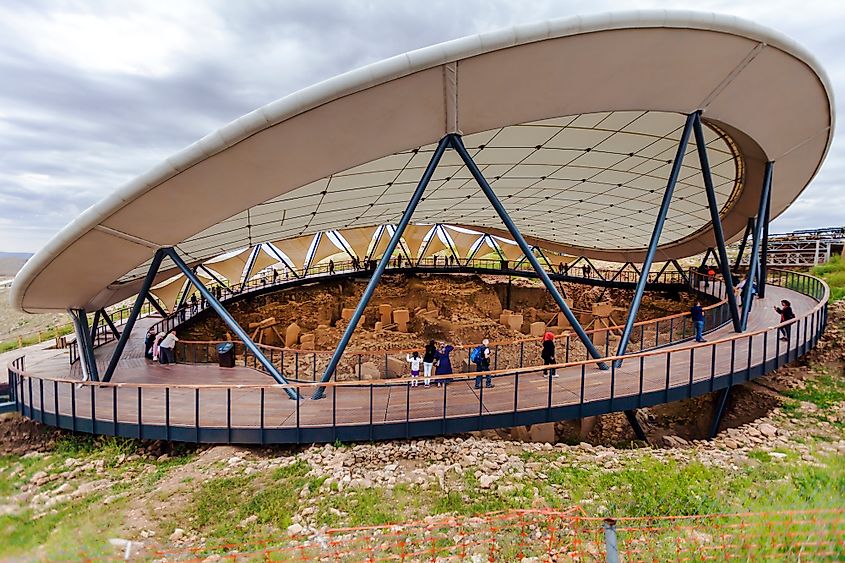
Even though each of these cities had their time in the sun, all of them eventually faded away and declined. Some of these cities declined because of a series of external factors such as invasions and natural disasters, while others suffered from irresponsible leadership or incomitant rulers.
The glory of Uruk and Memphis might be long gone, but the legacy they have left is remarkable. Uruk was the birthplace of things as simple as writing and basic city planning. Uruk would go on to inspire the foundation of dozens of other cities in the nearby region. Memphis, of course, was the center of Ancient Egypt for almost a thousand years and was the linchpin that joined the two halves of the nation together for the first time in history.
Today, the ruins of all these cities are painstakingly studied and examined to understand better what life was like for the first urbanites. The sites of each of these cities are diligently protected and preserved by the governments that now rule over these areas. It is not taken for granted by anyone how invaluable these places are.
Connection To Today
As different as the ancient city is from the modern city, there is still a lot in common between the two. The modern city still utilizes the same kind of organizational method of dividing certain areas into districts that each serve their own unique purpose. Most modern cities can point to a "center" or "core" of the city in which the rest grows out in the same fashion that was common in Mesopotamia. Even building settlements along vital waterways or other natural formations was something that characterized early cities, too. Even the process of problem-solving and basic governmental structure that we see in most cities today mirrors that of the Ancient World in one way or another.
No matter how different the day-to-day lives of ancient people were to those of our own in the modern world, there will always remain a shred of connection to these people who lived thousands of years ago and who were completely oblivious to how far-reaching and impactful their innovation would go.
If it were not for the discovery of agriculture, the city would have never existed, and without the city, the modern world we live in today would simply not be here. No matter how advanced and comfortable modern life allows us to be, it is always important to reflect and show gratitude to those who came before us and made all of this possible.











